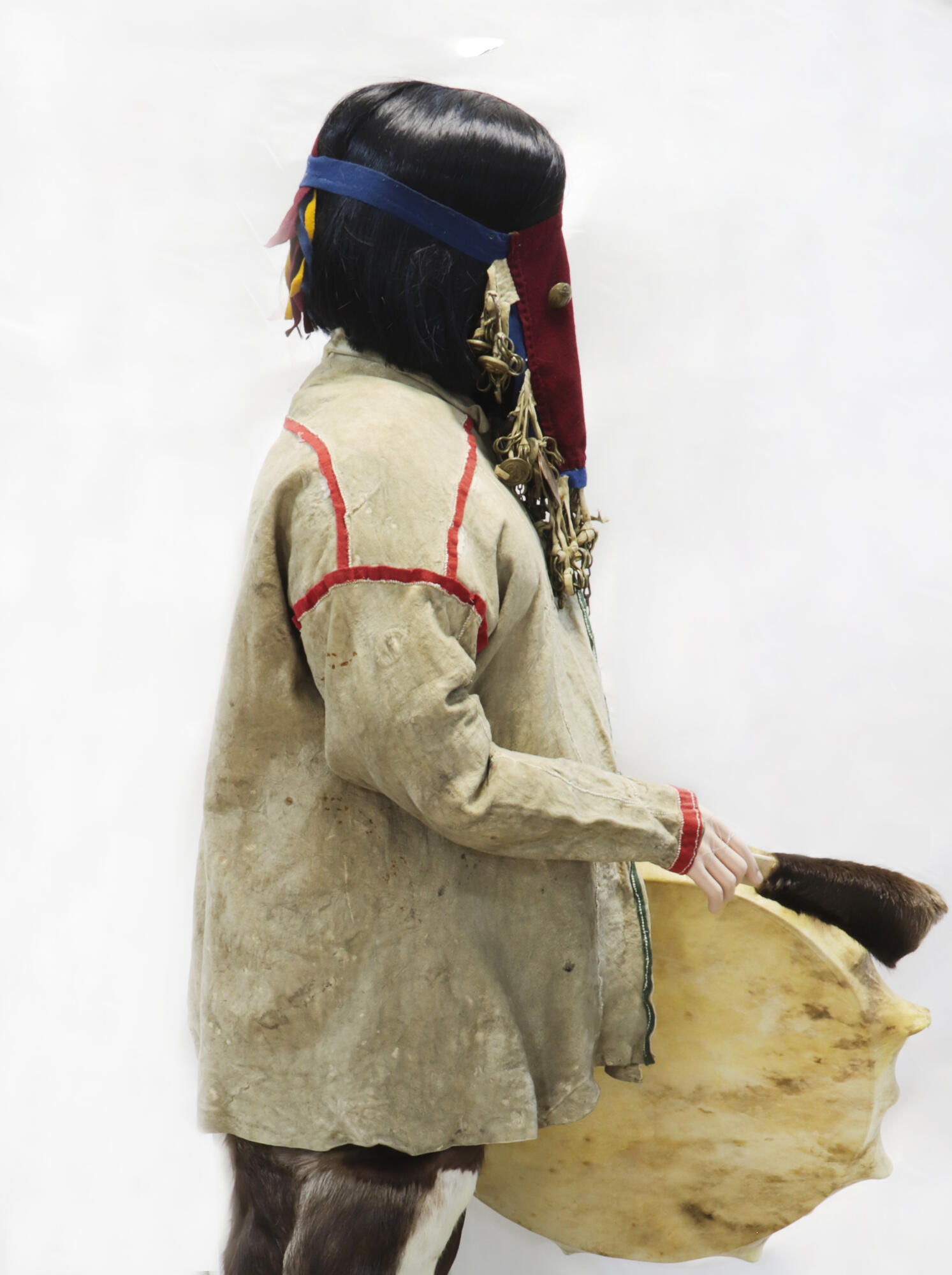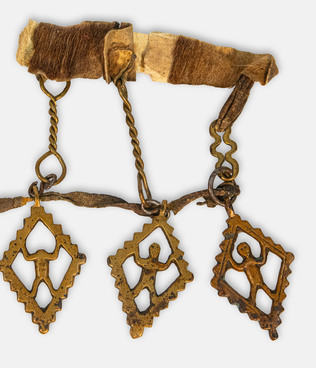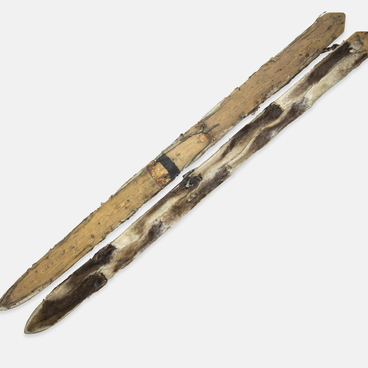The ritual outfit of Nenets shamans was simple and minimalistic. Most importantly, it was supposed to protect the shaman from evil spirits on earth during the trance-like ritual of kamlanie when the shaman’s soul moves between the worlds. A special outfit could be worn only by shamans who communicated with spirits inhabiting the Upper and Under Worlds.
The shamans from the European tundra (also known as tadibeys) used several types of clothing. One of them resembled a traditional malitsa shirt sewn from deer hide with fur inward. It was decorated with two rows of red cloth fringes which symbolized blood, masculinity, and life.
Red fringes were also attached to the shoulders, sleeves, and sides of the shirt. Iron plates were attached to the back and chest — metal was considered a sacred and pure material, and its sound was believed to drive away dark forces. A malitsa shirt made of cloth could also form part of shaman’s clothing or be used on its own as a summer outfit.
Another type of clothing was used to the west of the Pechora River. It was a suede shirt, with fringes along the bottom edge, and colorful strips of cloth decorating the sleeves, back, and chest. On top of it, a shaman could wear a robe made of rovduga (deer suede), slightly longer than knee length. It was decorated with suede tassels and pendants that made various sounds, including bells, belt plates, buttons, and calf hooves.
An outerwear of this type is displayed at the Nenets Museum of Local Lore. It is a suede shirt with a small turn-down collar. All seams are sewn on the outside, made with the neck hair of a white reindeer, and reinforced with tendon threads. Some seams and sleeves are decorated with bright red fabric. Along the sides of the shirt, there are strips of green cloth that symbolize the rebirth of nature. The color and décor of Nenets clothing always had some cultural and religious connotation.
The shaman’s shirt used to be decorated with ten strips of cloth with fringes or pendants. They have not been preserved. The side seams of the sleeves were decorated with strips of red and black cloth, which is evidenced by the lighter areas on the leather. The shirt is buttoned in the style of women’s clothes: right over left. Near the collar, there is a copper button with the image of a double-headed eagle with a crown, a scepter, and an orb.
A shaman’s outfit was made by several women who
worked together. The shaman’s wife, daughters, and sisters would gather, work,
and sing together. Afterwards, the shaman’s outfit would be subjected to a rite
of purification.




